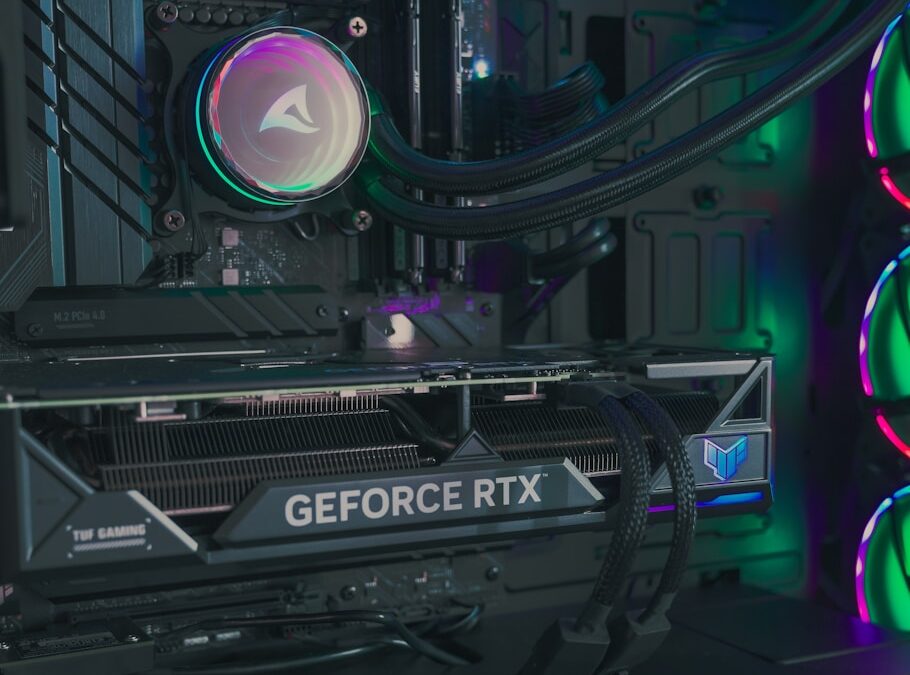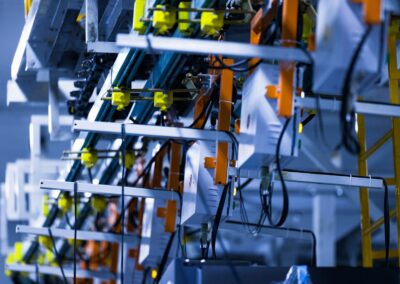The Impact of Automation on Device Configuration
Reducing Human Error through Automation
Implementing automation in device configuration significantly reduces the risk of human error and improves consistency across IoT systems. In dynamic environments like those found in Saudi Arabia and the UAE, cities such as Riyadh and Dubai are rapidly adopting smart technologies to enhance urban infrastructure. Automation in device configuration ensures that these technologies are deployed efficiently and accurately, minimizing the potential for costly mistakes.
Human error is a common issue in manual device configuration, often leading to inconsistencies and system failures. Automated processes, on the other hand, follow predefined rules and protocols, ensuring that each device is configured correctly every time. This precision is particularly important in complex IoT deployments where numerous devices must work together seamlessly. For instance, in Riyadh’s smart city projects, automation can streamline the setup of traffic management systems, ensuring that all sensors and signals are correctly configured to optimize traffic flow.
Moreover, automation enables faster and more reliable configuration of devices, which is crucial for large-scale IoT deployments. In Dubai, where smart city initiatives involve extensive networks of interconnected devices, automation ensures that these systems are up and running quickly and efficiently. By reducing the time and effort required for manual configuration, businesses and city planners can focus on more strategic activities, driving innovation and enhancing overall system performance.
Ensuring Consistency Across IoT Systems
Consistency is a key benefit of automation in device configuration. Automated processes ensure that all devices within an IoT system are configured to the same standards, eliminating the variability that can occur with manual configuration. This uniformity is essential for the reliable operation of IoT systems, particularly in applications where precise and consistent performance is critical.
For example, in the healthcare sector in Riyadh, automated configuration of medical devices ensures that all equipment operates under the same parameters, reducing the risk of errors that could affect patient care. Similarly, in Dubai’s smart grid systems, automation ensures that all sensors and meters are configured correctly, providing accurate and consistent data for energy management. This consistency enhances the reliability and efficiency of IoT systems, supporting their long-term sustainability and effectiveness.
Additionally, automated configuration processes can be easily replicated and scaled, supporting the expansion of IoT systems. As cities like Riyadh and Dubai continue to grow and adopt new technologies, automation enables them to scale their IoT infrastructures efficiently. This scalability is crucial for maintaining the performance and reliability of IoT systems as they expand, ensuring that they can meet the evolving needs of urban environments.
Streamlining Maintenance and Updates
Automation in device configuration also streamlines maintenance and updates, ensuring that IoT systems remain up-to-date and fully functional. Automated processes can quickly and accurately apply updates to all devices within a system, reducing the risk of human error and ensuring that all devices operate with the latest software and security patches. This capability is particularly important in environments where timely updates are critical for maintaining system performance and security.
For instance, in Dubai’s smart transportation systems, automated updates can ensure that all traffic management devices operate with the latest software, optimizing traffic flow and reducing congestion. Similarly, in Riyadh’s smart building initiatives, automated updates can ensure that all building management systems are secure and up-to-date, enhancing energy efficiency and occupant comfort.
Automated maintenance processes also enable proactive monitoring and troubleshooting of IoT devices. By continuously monitoring device performance, automated systems can identify potential issues before they become major problems, allowing for timely maintenance and reducing downtime. This proactive approach enhances the reliability and resilience of IoT systems, supporting their long-term success and sustainability.
Practical Applications and Future Prospects
Enhancing Business Efficiency
The use of automation in device configuration significantly enhances business efficiency by reducing the time and resources required for manual configuration. For business executives and mid-level managers in Saudi Arabia and the UAE, automation provides a powerful tool for optimizing operations and improving productivity. Automated processes enable businesses to deploy and manage IoT systems more efficiently, freeing up resources for other strategic activities.
In the manufacturing sector, for example, automated configuration of production equipment ensures that all machines operate with the same parameters, improving production consistency and reducing waste. In Dubai’s advanced manufacturing facilities, automation enables rapid reconfiguration of production lines to accommodate different products, enhancing flexibility and responsiveness to market demands.
In the retail sector, automated configuration of IoT devices such as inventory sensors and point-of-sale systems ensures that all devices operate reliably and consistently. This capability is particularly valuable in Riyadh’s retail environments, where automated systems can optimize inventory management and enhance customer experiences. By reducing the time and effort required for manual configuration, automation enables retailers to focus on delivering high-quality products and services to their customers.
Supporting Technological Innovation
Automation in device configuration also supports technological innovation by enabling the rapid deployment and scaling of new IoT solutions. For entrepreneurs and business leaders in Riyadh and Dubai, automation provides a foundation for exploring new business models and technologies without the constraints of manual configuration processes. This capability is essential for staying competitive in today’s fast-paced technological landscape.
For instance, in the energy sector, automation enables the rapid deployment of smart grid technologies that optimize energy distribution and consumption. In Dubai’s innovative energy projects, automated configuration of smart meters and sensors ensures that these devices operate efficiently and accurately, supporting the city’s sustainability goals. Similarly, in Riyadh’s renewable energy initiatives, automation enables the seamless integration of new technologies, enhancing the city’s energy resilience and sustainability.
Automation also supports the development of new IoT applications in sectors such as healthcare, transportation, and smart buildings. By reducing the time and effort required for manual configuration, automation enables businesses and city planners to experiment with new solutions and scale successful projects quickly. This capability drives continuous innovation and ensures that cities like Riyadh and Dubai remain at the forefront of technological advancements.
Future Prospects of Automation in Device Configuration
The future prospects of automation in device configuration are promising, with advancements in AI and machine learning poised to further enhance its capabilities. As these technologies evolve, they will enable even more precise and efficient automation processes, reducing the risk of errors and improving system performance. For cities like Riyadh and Dubai, these advancements will support the continued development of smart city initiatives and drive technological innovation.
Emerging technologies such as edge computing and blockchain will also play a crucial role in the future of automation. Edge computing enables data processing closer to the source, reducing latency and improving the speed and efficiency of automated processes. This capability is particularly important for applications that require immediate responses, such as autonomous vehicles and real-time health monitoring systems. The integration of edge computing and automation will enable more responsive and resilient IoT systems.
Blockchain technology will enhance the security and transparency of automated processes, ensuring that device configurations are secure and tamper-proof. For businesses and cities in Saudi Arabia and the UAE, integrating blockchain with automation will enhance data security and build trust in IoT systems. This capability is essential for the widespread adoption of IoT technologies and the realization of smart city visions.
Conclusion
Automation in device configuration offers significant benefits, reducing the risk of human error, improving consistency, and enhancing operational efficiency. By leveraging automation, cities like Riyadh and Dubai can optimize their IoT deployments, supporting the development of smart city initiatives and driving technological innovation. For business executives, mid-level managers, and entrepreneurs, understanding and implementing automation in device configuration is crucial for achieving sustainable growth and success in the rapidly evolving landscape of IoT.
—
#Automation #DeviceConfiguration #IoTSolutions #RiskManagement #SmartCities #TechnologyIntegration #BusinessEfficiency































